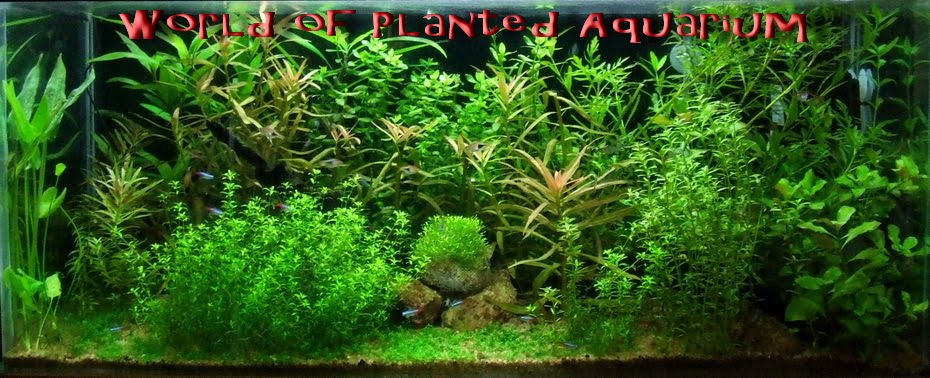Concepts of Substrates in the aquarium
>> Friday, July 10, 2009

In an average aquarium, the substrate is likely to be a fairly straightforward affair, usually a simple covering of pea gravel. Plants use the substrate not only as a place to root, but also as a source of nutrients and, in some cases, a medium through which to reproduce. The root systems of aquatic plants vary between species, but all are highly evolved to work effectively in a given natural environment. Most of these environments are nothing like those found in an aquarium with a simple pea gravel substrate. Difficulties encountered when keeping aquatic plants can often be attributed to the lack of a good, useful substrate. Clean, inert gravel creates a fairly biologically inactive substrate. Because the water flows easily through such a medium, it removes nutrients, cools the plant roots, and creates an oxygen-rich area, all of which are undesirable and hinder the development of aquatic plant roots.
So which substrates are best? This is not an easy question to answer. Some plants do not need any specialized substrates, while a few need no substrate at all! However, for the most part, a mixture of substrates will create an environment suitable for all the plants in the aquarium. The points to consider are: the size and shape of the particles, the depth of the substrate layer, and its mineral and organic content.
Size and shape
If the particle size of the substrate is wrong, it may cause problems for aquatic plants. A substrate made up of particles that are too large will allow water to pass through easily, removing nutrients. Furthermore, debris will collect in the gaps between the particles, which
may muddy the water. Large-grade substrates also cause problems for the growth of long roots and should be used only as a thin top layer.
If the substrate is too fine it may compact, halting the movement of oxygen and nutrients, and causing damage to the root structure.
A suitable aquarium substrate should have a particle size of about 0.04-0.12 in (1-3 mm) and be rounded in shape; sharp substrate particles can damage roots. The only exception is sand, which can be used as a thin bottom layer to support heating cables, but not required in most of the Indian conditions.
Substrate depth
Substrate depth does vary a little, depending on which species of plant you are keeping. Plants that produce long roots, such as Echinodorus species and some cryptocorynes, will need a substrate deep enough for the roots to penetrate. If the substrate is too shallow, the roots of these plants will become dense and tangled. In this situation, the plant cannot obtain nutrients and the roots will become starved of oxygen.
Generally speaking, foreground plants do not produce long roots, so it is possible to slope the substrate upward toward the back of the aquarium. This also makes the aquarium appear deeper than it is. A good substrate depth is 2.4-4 in (6-10 cm).
Mineral content
Plants require minerals in small amounts, but it is difficult to provide these through the substrate, although some nutrient-rich substrates do contain the essential minerals that aquatic plants require. In general, the quantities of minerals required by plants are usually readily
available in tap water. However, if the source water for your aquarium is relatively soft it may be lacking in these minerals, in which case you can use liquid fertilizers.
More importantly, a substrate should not contain harmful minerals, most notably, compounds with a high calcium content. Limestone and coral-based substrates, often available for marine aquariums, are high in calcium and should never be used in a freshwater planted aquarium. Substrates such as these will increase the alkalinity and pH of the water, making it harder for plants to obtain nutrients and C02.
Organic content
The organic content of a substrate includes organic nutrients, as well as waste matter from the aquarium (mainly from fish). A substrate without any organic matter is simply an "anchor" for the plants and of little other use. You can add organic matter by using a nutrient-rich substrate, which can either be mixed with the main substrate or arranged as a layer between two substrates. Soil and peat have a very high organic content, so use them with care to avoid overloading the aquarium with organic matter.



0 comments:
Post a Comment